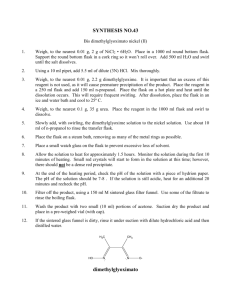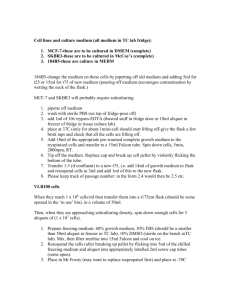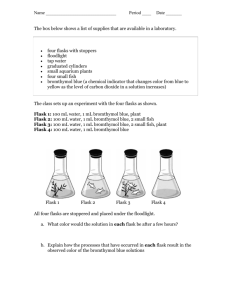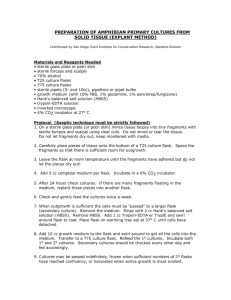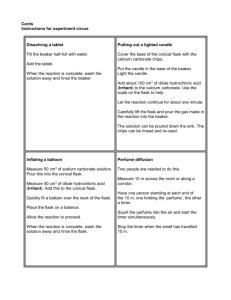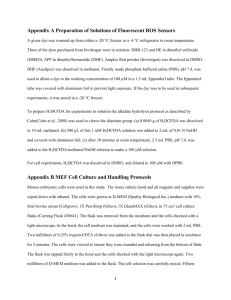Mathematical Investigations II
advertisement
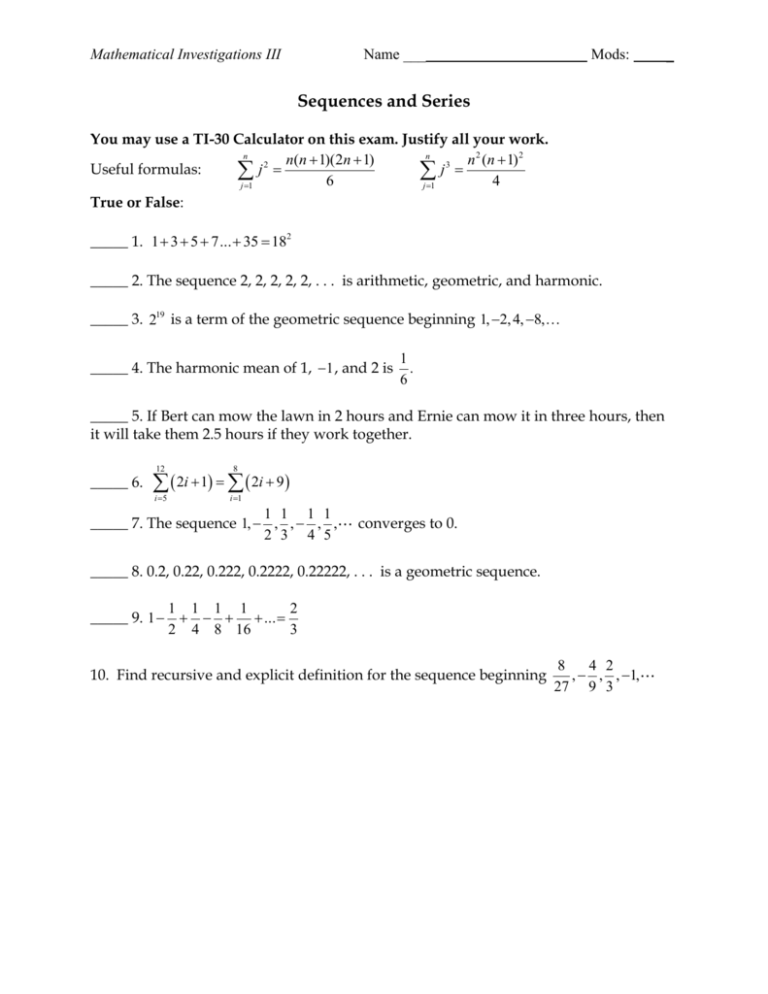
Mathematical Investigations III Name ___ Mods: Sequences and Series You may use a TI-30 Calculator on this exam. Justify all your work. n n n(n 1)(2n 1) n 2 (n 1) 2 2 3 Useful formulas: j j 6 4 j 1 j 1 True or False: _____ 1. 1 3 5 7... 35 182 _____ 2. The sequence 2, 2, 2, 2, 2, . . . is arithmetic, geometric, and harmonic. _____ 3. 219 is a term of the geometric sequence beginning 1, 2, 4, 8, _____ 4. The harmonic mean of 1, 1 , and 2 is 1 . 6 _____ 5. If Bert can mow the lawn in 2 hours and Ernie can mow it in three hours, then it will take them 2.5 hours if they work together. _____ 6. 12 8 i 5 i 1 2i 1 2i 9 1 1 1 1 _____ 7. The sequence 1, , , , , 2 3 4 5 converges to 0. _____ 8. 0.2, 0.22, 0.222, 0.2222, 0.22222, . . . is a geometric sequence. 1 1 1 1 2 _____ 9. 1 ... 2 4 8 16 3 10. Find recursive and explicit definition for the sequence beginning 8 4 2 , , , 1, 27 9 3 _ 11. Expand, but do not calculate, 7 (n 2 n) . n 3 1 12a) Find 3 2 k 1 5 b) Find k 1 k 1 1 3 2 k 1 1 c) Find 3 2 k 6 k 1 using the formula for a finite geometric series. . . d) What relationship exists between your answers to (a)-(c), and why? Sequences and Series Test 8 February 2010 13. Find the sum 100 (4k 2) . k 1 14. Evaluate 5 4.9 4.8 1.2 1.1 1. 15. Find 2i 2 3 . State your answer in terms of n. n i 1 a1 3 16. an 2 an 1 3 a) State the first five terms of the sequence using common fractions. b) Give an explicit formula for the sequence. Sequences and Series Test 8 February 2010 17. Evaluate j 2 1 1 2 j 1 2 j 5 . 18. Suppose you have two one-liter flasks, A and B. Initially, flask A is completely filled with water, while B is empty. In the first minute, you pour (without spilling!) one-third of the contents of flask A into flask B. Each minute thereafter, you pour onethird of the remaining contents of flask A into flask B. Now let an and bn represent the amount of water, in liters, in flasks A and B after n minutes. a) Write a recursive definition for the sequence an . b) Suppose the sequence cn is defined by cn an bn . Find a formula for cn . c) Suppose S n is the sequence of partial sums for bn . Find S 3 . d) After how many minutes will flask A be empty? Sequences and Series Test 8 February 2010 Sequences and Series Test 8 February 2010




